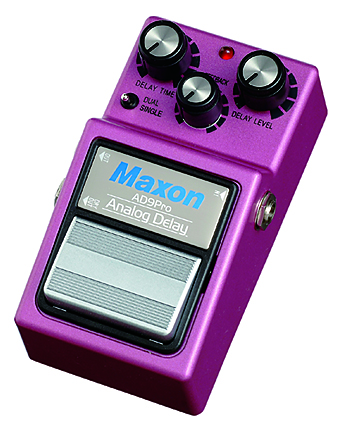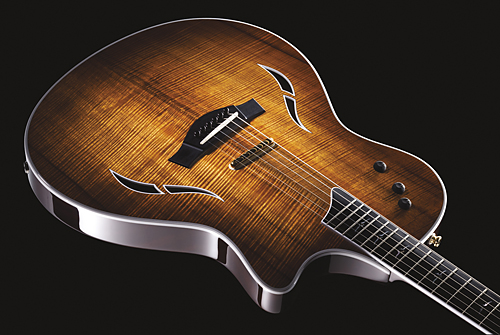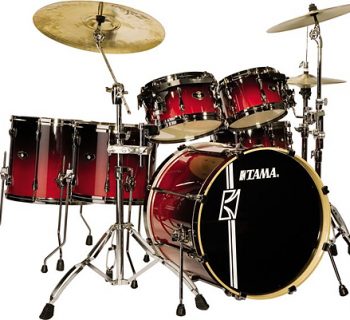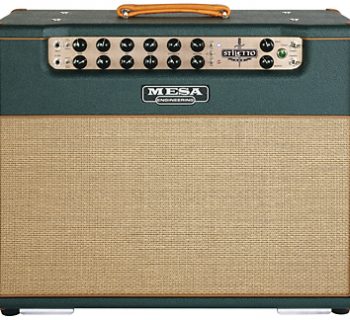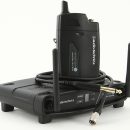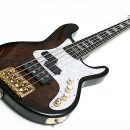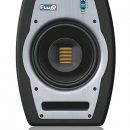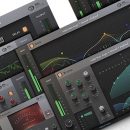 When TC Electronic invited us to the launch of a new line of music equipment at Winter NAMM, the last thing that ever would have crossed our minds was the launching of a line of bass guitar amplifiers. After all, TC Electronic is an effects company — not an amp company. Or so we thought… and boy were we ever wrong!
When TC Electronic invited us to the launch of a new line of music equipment at Winter NAMM, the last thing that ever would have crossed our minds was the launching of a line of bass guitar amplifiers. After all, TC Electronic is an effects company — not an amp company. Or so we thought… and boy were we ever wrong!
Making a solid-state amplifier with clean audio specs and great EQ seems like a straightforward task for a company whose legacy of recording studio gear is firmly established, but making speaker cabinets? It wasn’t until we were reminded of one small detail that it all came together for us with a resounding two thumbs up (actually, many thumbs up) — TC Group owns both TC Electronic and sister company Tannoy, manufacturer of popular recording studio audio monitors.
| Category | Value | Rating |
| Features | 20% | |
| Usability | 25% | |
| Sound | 25% | |
| Documentation & Support | 10% | |
| Price | 20% | |
| OVERALL RATING = 3.6, which earns it a WIHO Award! 3.6 stars or better: Outstanding, WIHO Award 3 stars or better: Worth considering 2 stars or better: Suited to specific needs 1 star or less: Not recommended |
||
The result of TC Electronic and Tannoy’s design collaboration is nothing short of brilliant — we unequivocally love this bass rig, and if we had the spare cash, we’d make it a permanent fixture in our studio. It offers plenty of volume, great definition and a punchy sound, cool player-friendly features that are rarely found in bass amps, and an easily transportable design that enables you to fit a full-range bass rig within the confines of a tightly-packed club stage… and carry it all back to your car without requiring a team of roadies!
Features
We tested the full stack configuration, which included the RH450 bass head, RS210 cabinet, and RS212 cabinet.
RH450 Bass Head
The RH450 head is rated at 450 W of Class D power (at 4 ohms). Some amps have bigger numbers here at 4 ohms, but don’t worry. We found that this amp produced enough clean volume and projection to be annoyingly loud in a rock band setting that featured two half-stack guitar rigs, keyboards, drums, and five vocalists.

The RH450 has three channels, selectable via front-panel LED buttons or (optional) footswitch, each with completely independent settings for gain, EQ, compression, and TubeTone (simulated tube saturation). For players who like to use multiple basses on the same gig or studio session, this makes it really easy to have instant access to level-matched settings for one bass with active electronics, another with passive pickups, or just to save some radically different tones for different songs.
The EQ section provides four bands of parametric equalization: Bass, Lo-Mid, Hi-Mid, and Treble. Pressing the Shift button on the RH450 changes the function of each knob — in Shift mode, the knobs enable you to change the center frequency for each EQ band.
The Gain knob is used to set the input gain for your bass, and hitting the Shift knob changes the functionality of the knob to control the SpectraComp compressor. Unlike traditional compressors, TC Electronic implemented multi-band compression in the RH450, which applies different amounts of compression to the signal based on frequency. In essence, this means it can achieve more compression of notes on your high strings without compromising the quality of tone from your low strings, which traditionally influence the response of a compressor across the entire range of your bass.
The TubeTone knob enables you to dial in the dirt. You can generate everything from subtle tube amp warmth to highly overdriven tone. Additionally, the amp is engineered to simulate tube amp response across the overall sound — a feature TC Electronic calls Active Power Management. What happens is that the amp logarithmically applies a minute amount of compression as amp volume is increased, simulating the response that tubes deliver when pushed harder rather than applying hard clipping as would happen in a traditional solid-state amp design.
A touch of the Shift button switches the TubeTone button to Preset Level control. With settings for three different bass sounds, this secondary level control enables you to volume-match your different sounds, especially useful if you’re switching between active and passive instruments.
Rounding out the front panel are an always-on tuner, a Mute button, and a headphone jack for silent practice. Plugging into the headphone jack automatically mutes the speaker output. We’re glad that the tuner works while the amp’s output is muted, and there is also a tuner display on the footswitch — you definitely don’t need your old tuner when you switch to this amp. Although you can’t save non-standard tunings in the tuner, you can customize the reference frequency if you’re playing with an acoustic group that doesn’t tune to A 440 Hz (range is 438 to 445 Hz).

The back of the RH450 has an equally impressive set of features. Besides Speakon and quarter-inch speaker connectors, there’s a built-in DI for connection directly to a PA system. And for recording, there’s also a digital AES/EBU and S/PDIF-compatible output. Both the digital output and the DI share a switch on the back for the output to be either Pre or Post of the amp and EQ sections.
There’s a Series effects loop on the rear that is placed after the preamp section and before the power section of the head. Levels are set automatically internally.
Finally there are inputs for the optional foot controller as well as a set of RCA jacks for connecting an iPod or other music device for play-along rehearsing.
 The optional RC4 foot controller is a beautiful affair with a similar appearance to Nova series pedals. It has the digital tuner display and buttons for Mute as well as selecting the three memory settings. With the foot controller, you’ll never need to look at your amp for tone selection or tuning — nice!
The optional RC4 foot controller is a beautiful affair with a similar appearance to Nova series pedals. It has the digital tuner display and buttons for Mute as well as selecting the three memory settings. With the foot controller, you’ll never need to look at your amp for tone selection or tuning — nice!
RS210 and RS212 Speaker Cabinets
Surely one of the coolest aspects of this bass rig is the clever line-array-like speaker arrangement. Rather than playing through a traditional 410 cabinet (though TC Electronic offers one of these, too), the RS210 and RS212 8-ohm cabinets are optimized for vertical stacking. In this arrangement, you get the benefit of really hearing your tone as it sounds.
At first glance, you can’t help but wonder what the cabinets are made of, with their seamless, anti-scratch finish. As it turns out, this is just a cool sprayed-on surface over 18mm plywood construction.
Each cabinet is ported in the rear — two ports in the RS212 and one in the RS210. The cabinets have recessed side handles for easy lifting, concentric Speakon/quarter-inch rear connectors (two apiece, for chaining cabinets), and a control for adjusting the high-frequency driver level.
The RS210 and RS212 cabinets each feature two custom-designed Eminence speakers— ten inches and twelve inches, respectively, and they both have a 33mm high-frequency titanium driver mounted concentrically within the center of the top-mounted speaker.
Usability
Basic operation of the RH450 was very straightforward. The speaker cabinets even included custom-length Speakon cables, so connecting the rig took less than a minute. One cable ran to the head, and one ran from the RS210 into the RS212.
We have to marvel at the light weight of the entire package. First, the RH450 amp itself is a dream, weighing under nine pounds and sporting a recessed carrying handle along one edge. If you’ve ever lusted after an Eden amplifier or similar boutique head that packed great tone into an ultra-lightweight package, this is definitely another contender sure to raise the jealousy flag.
But it’s the speaker cabinets that will really have your friends (not to mention your band’s guitar player) lusting with envy. The RS212 is only 52 lbs, and the RS210, with a shallower depth and smaller speakers, weighs only 46 lbs.
You might be thinking that all of the dual-function knob personality mentioned in the Features section makes operation of the RH450 confusing, but not so. The knobs are all rotary encoders, with a cool-looking ring of red LEDs surrounding each knob to visually indicate the value of each knob.
Rotary encoders have become extremely popular on other musical gear for good reason: whenever you touch a knob (or the shift button), you instantly experience the current setting. With traditional analog knobs, if you had saved a sound, for example, touching a knob would make your tone jump automatically to whatever position the knob was left in at that current moment, sometimes producing undesired audio effects. Rotary encoders eliminate that problem completely.
The Gain knob is accompanied by an adjacent Overload LED. Optimal gain was achieved by setting the gain high enough so that the Overload LED only occasionally lit up. As this is not a tube amp, the gain control is not where you want to overload the signal — this results in diminished audio quality (the word ass came to mind, but we didn’t know quite how to put it in there). Using the TubeTone control enabled us to dial in saturation and overdrive as desired.
The RH450 has more EQ control than we could ask for. Between four bands, each with an easily-adjusted center frequency, it was easy to dial in a range of tones that ranged from subtle coloring to significant alteration. Alternative rock players who like to experiment with tone will love the extremes to which you can color your sound.
The input jack for an iPod is a nice bonus feature for silent rehearsal. There is no volume control for this input on the amp, so you have to control the volume from your iPod (the Master knob controls headphone volume when you’ve got them plugged in). We didn’t factor use of this input into the rating of the amp as it’s not anything a pro player is specifically looking for, but it’s there for the using nonetheless.
The tuner worked great on both five- and six-string basses. Arrows constantly show you whether the pitch is sharp or flat, with a big O appearing when tuning was nailed, and the letter value of the note displayed in a large LED display. When the amp was in Mute mode, the Gain rotary encoder also displayed an active LED showing our pitch as we adjusted from flat to in-tune to sharp.
Although the exterior is covered in a very abuse-resistant covering, plan for the speaker cabinets to show signs of use. Just moving the cabinets around our studio environment, we managed to slightly scuff them up on each other. TC Electronic sells slipcovers for the cabinets separately, but we think they should be included. Many guitar amps and speaker cabinets from the major players include scratch-protective covers with the products.
Our only concern is the use of this rig in its vertical orientation on a carpeted floor. With the narrow footprint, if your rehearsal space or home studio has thick carpet with padding, the rig might become slightly unstable. In our new commercial studio environment, with thin carpet glued to a cement floor, there was no problem. But in our old studio, which had some carpet padding, we were concerned that if someone were to bump into the rig, there was a chance they might knock it over. We would have liked to see the inclusion of adjustable spikes for use in carpeted environments (or perhaps sell that as an option, but throw in the covers). Of course you could always choose to lay the cabinets on their side, completely eliminating the balance issue.
Sound
We tested the RH450 rig with a Music Man Stingray five-string bass and a Yamaha John Myung signature six-string bass. In all applications, we found this bass rig to be extremely punchy sounding, easily cutting through the mix in a variety of rock and pop styles.
The amp was extremely clean sounding, delivering studio quality, precision tone that was music to our ears. But don’t be mislead into thinking studio precision means cold or sterile — there’s a subtle, warm character to the overall tone that comes through nicely. Be warned, though, if you have noisy pickups. This amp will happily reveal the true “character” of your instrument. For that reason, you may prefer to use it with modern basses more than your classic ’57.
There’s an internal fan, but we almost didn’t notice that the amp even had one! The fan’s speed varies with operation, speeding up when the amp is pushed at higher volumes, and running slower (thus, quieter) when the amp isn’t working as hard. And when we stopped playing and muted our strings, the fan cut out and the amp went completely silent.
Depending on how we adjusted the EQ, it was easy to emphasize the sound of a pick on the strings for alternative rock tones, bring out a real woody tone for some vintage rock vibe, or create a smooth low end to shake the floor with low-end rumble like only a six string could deliver.
The speakers handled everything we threw at them, and they stayed tight and focused with almost everything we threw at them. This is a rig for players seeking clean, punchy bass tone. It’s big, it’s rich, and it’s beautiful sounding, but if you’re after a sloppier, looser tone for down-tuned metal, it’s not the right amp for you. Players of Emo, pop punk, mainstream rock, prog rock, and fusion players will universally love the tone.
The TubeTone feature provided a mostly-useful enhancement to our tone. Dialing it in added some additional warmth while at the same time it seemed to introduce a very subtle amount of Sag (albeit, simulated) to the signal for a more relaxed and slightly less aggressive feel.
When cranked, TubeTone provided a classic overdrive tone, though not an especially lush or thick overdrive. At times it made us think of old, dirty Ampeg amps — classic for sure, but it took away from the beauty of this amp’s punchy and bright character. And while the classic tone was there, it didn’t have the richness or depth that we would desire with that type of tone. If distortion is a principle part of your bass tone, we’d suggest sticking with your favorite tone-decimating pedal, but for occasional use it’s a handy effect, and of course more subtle use (in the 9:00 to 1:00 range) proved extremely useful.
The compressor sounded great, which shouldn’t come as any big surprise since TC Electronic has been doing this kind of signal processing for decades. It was extremely smooth throughout the range, and it didn’t color or mask our tone at all. The multi-band compression lives up to its description, applying compression (it seemed) more to the higher strings than the lower ones, and the results tended to feel subtle overall. After spending a lot of time playing with and without the compressor, we’re actually left with no preference for which way our tone sounded, and that’s just fine with us. We thought the tone was great whether or not we applied any compression.
We placed a BOSS CE-5 Chorus pedal in the effects loop and had great results. There was no loss of tone quality, no additional noise, and the pedal’s level control worked just fine for dialing in the amount of chorus we heard on our tone. Between the pedal being buffered and the amp providing automatic level control for the loop, there was no difference in volume when we kicked the pedal On or Off.
For times when you don’t need a full stack, we also played the RH450 using only the RS212 cabinet to hear the difference. As you might expect, we didn’t hear the high frequencies as brightly since the speakers weren’t very close to ear level, but the tone was still rich, deep, and loud enough to cut through a rock band. We were actually surprised just how big the sound was coming from only a single 2x12 cabinet (we spend most of our time with 4x10 cabinets that include high-frequency drivers).
A simple adjustment of EQ and to the high-frequency level control on the rear of the speaker cabinet were more than enough to make up for losing the chest-level second speaker cabinet. This single cabinet and head combination will be a dream for coffee house gigs, jazz ensemble gigs, cocktail parties, etc. Small package; big sound.
Documentation and Product Support
The User’s Manual for the RH450 did an excellent job explaining all of the amp’s functionality in a very straightforward manner, and the cabinets came with a quick reference sheet that explained a variety of ways to connect the cabinets.
Price
The RH450 (MSRP $1,395) sells for just under $1,000, and the RS210 (MSRP $695) and RS212 (MSRP $845)) sell for $500 and $600, bringing in the full rig for $2,100, a good price for a pro rig with such fantastic versatility. The optional RC4 foot controller (MSRP $195) sells for around $150. A gig bag for the head and slipcovers are available, too.
TC Electronic has also introduced a scaled-down amp, the Classic 450, which lacks many of the bells and whistles of the RH450 but features the same tone engine, compressor, and TubeTone.
Contact Information
TC Electronic
www.tcelectronic.com
Evaluation Short-List
- Markbass TSA500
- Eden WT-405
- Epifani UL-502
It is hard to find any bass amp with a directly comparable feature set to the RH450, so we've selected a few other lightweight pro models of comparable quality.


